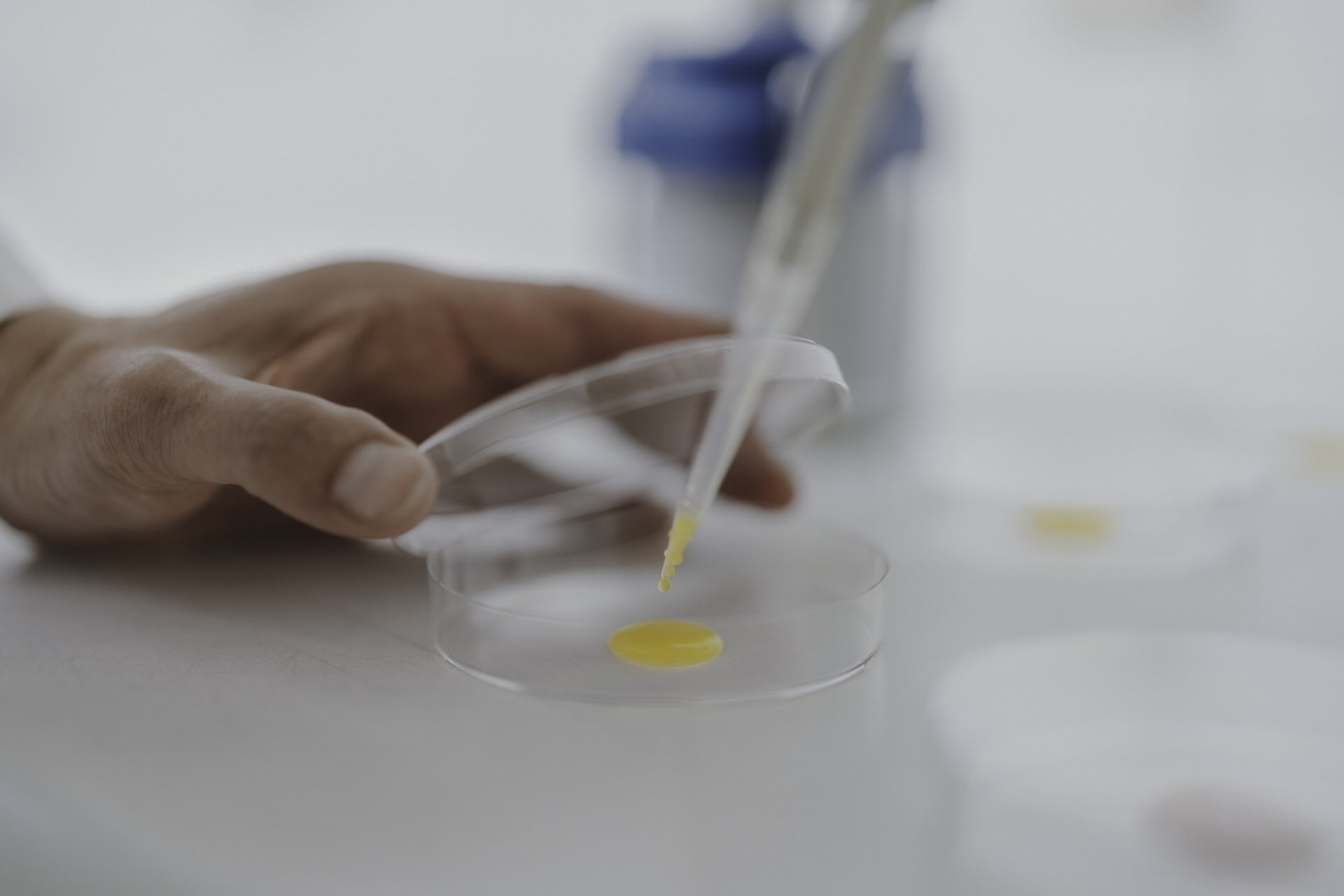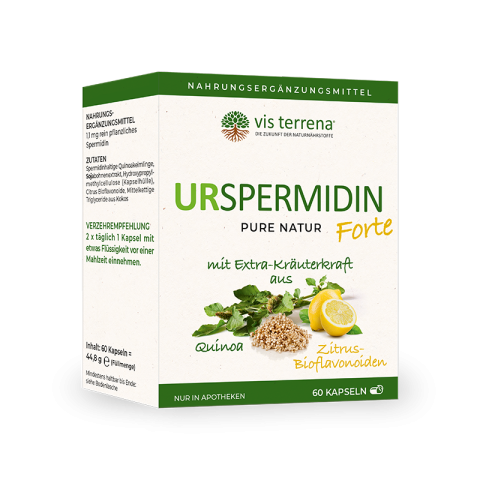
Highest quality - clinically tested
Research with a future
Developed by experts, proven by studies
Our endeavour is to enable people to enjoy good health through sustainable research. In constant dialogue with biologists, doctors and pharmacists, we develop innovative preparations based on nutritional principles that have been scientifically proven in studies. The focus is on utilising the healing powers of nature.
RESEARCH AND DEVELOPMENT
We develop products based on the latest scientific findings coupled with decades of research into micronutrients and nutritional medicine. The effects of our products are tested in co-operation with nutritional physicians and medical institutions. We also publish many of these results in scientific publications.

RAW MATERIALS OF THE HIGHEST QUALITY
We use raw materials of the highest purity and quality for our products. The quality assurance department in our company ensures microbiological and ingredient checks for every raw material, tests for the absence of heavy metals and residues and also checks the packaging used for food safety.

PRODUCTION OF INNOVATIVE RAW MATERIALS
The globally unique raw materials of the NUTROPIA group of companies are internationally patented and known under the name PANMOL®. They are the result of our many years of nutritional research and development work. In contrast to synthetic, isolated laboratory vitamins, PANMOL® (vitamins, minerals, trace elements and essential fatty acids) offers a holistic spectrum of plant nutrients. This complex uniqueness of vital substances ensures optimum tolerability, availability and a wide range of effects. The plant-germinated nutrients, some of which are biologically active, are clearly superior to synthesised vitamins in terms of bioavailability and variety of effects.

Unique advantages
- the highest content of plant micronutrients in the world
- the better bioavailability of natural nutrients
- the needs-adequate, complete composition
- the unique variety of effects
- the standardised micronutrient content
- the patented manufacturing process
- the versatile, technical usability
- the wide range of applications

Austrian Centre for International Research
We see ourselves as a benchmark when it comes to impeccable processing quality, adherence to the strictest production guidelines, the highest purity of raw materials and an unconditional sense of responsibility. More than 100 highly qualified experts research the effects of daily nutrition on health in the southernmost part of Salzburg.

Targeted health improvement through advanced micronutrient supplements. No utopia with our products, but already a tried and tested reality.
SCIENTIFIC PUBLICATIONS
The intake of plant-based omega-3 fatty acids only slightly increases the body’s own EPA/DHA levels, as only minimal endogenous conversion is possible. The literature data range from 5 % to 10 % conversion rate of alpha-linolenic acid to EPA. The conversion rate to DHA is said to be only approx. 0.5 %. This makes new data, according to which the serum levels of eicosapentaenoic acid and docosahexaenoic acid could be increased by 73 % and 62 % respectively through the intake of vegetable oil, all the more interesting. It is assumed that the accompanying intake of trace elements and vitamins as cofactors of desaturases and elongases can increase the activity of the enzymes responsible for the conversion.
Rösler R, Fuchs N, Kuklinski B, Markolin G
Atopic dermatitis (AD), syn. neurodermatitis, atopic eczema or endogenous eczema, is a chronic or chronically recurrent skin disease. The clinical picture is assumed to have a complex pathogenesis in which, in addition to a genetic predisposition and provocation factors due to environmental influences, a disturbed skin barrier and an altered immune response are primarily associated with the occurrence of the disease. From a nutritional point of view, atopic dermatitis is a disease associated with, among other things, a disturbed fatty acid metabolism caused by a reduced activity of the enzyme delta-6-desaturase. The aim of this pilot study was to investigate the influence of a nutriological preparation that supports the activity of delta-6-desaturase on a physiological level and has anti-inflammatory and immunomodulating properties on the disease process.
Rösler D, Hantich-Hladik B, Markolin G, Kößlbacher C, Pouget A, Horn J, Schrotter K, Fuchs N
Background: Supplementation with vitamins to prevent and compensate for deficiencies is widespread. In this context, it is often discussed whether natural vitamins show differences in bioavailability and metabolic influence compared to their synthetic analogues.
Methods: 30 healthy women and men were examined in a randomised, double-blind cross-over study over two supplementation periods of 6 weeks each. The subjects received a complex of 8 natural (group N) or synthetic B vitamins (group S). The daily dose for each individual B vitamin corresponded to approximately 2.5 times the daily recommended intake of national nutritional authorities and was determined by the natural composition of quinoa sprouts in the test preparation. The primary test criterion was the change in blood levels of the individual B vitamins. The secondary criterion was the influence of the vitamin B complexes on homocysteine, antioxidant status, polyphenols, peroxide load and peroxidase activity. Results: Compared to baseline values, there was an increase in serum levels of all B vitamins measured: Vitamins B1 (N +23%; S +27%), B2 (N +14%; S +13%), B6 (N +101%; S +101%), B9 (N +86%; S +153%) and B12 (N +16%) were elevated at the end of the first supplementation period (p < 0.05), with serum levels of vitamins B1, B9 and B12 remaining elevated from baseline levels even after the 2-week washout period. During the second supplementation period, the vitamin concentrations in group N, with the exception of vitamin B1, were again increased (p < 0.05). In group S, on the other hand, substantial increases were only found for vitamins B2 and B12 (p < 0.05). Homocysteine and polyphenols were significantly reduced, while total antioxidant capacity and peroxidase activity increased. The peroxide concentration remained almost unchanged in both groups.
Conclusion: This clinical pilot study showed comparable bioavailability for natural and synthetic B vitamins at nutritional doses. Both vitamin B complexes also had clearly measurable effects on metabolic parameters. The natural vitamin B complex tended to have a somewhat stronger effect than the synthetic analogues.
Lindschinger M, Tatzber F, Schimetta W, Schmid I, Lindschinger B, Cvirn G, Fuchs N, Markolin G, Lamont E and Wonisch W
The vitamin B complex comprises 8 different water-soluble constituents that humans must sequester from the diet. This pilot study compared natural versus synthetic vitamin B complexes for their bioavailability, accumulation, and their impact on antioxidants, homocysteine levels, and oxidative stress. We conducted a double-blind randomised clinical trial with thirty healthy participants. They were randomly assigned to group N (natural) and group S (synthetic). Vitamin B was ingested daily for 6 weeks in the range of about 2.5 times above the recommended daily allowance. Blood samples were taken at baseline, 1.5 h, 4 h, 7 h (diurnal), 6 w (discontinuation of supplements), and 8 w (washout). Blood levels of thiamine (B 1), riboflavin (B 2), pyridoxine (B6), folic acid (B 9 ), cobalamin (B 12), homocysteine, total antioxidants, peroxidase activity, polyphenols, and total peroxides were determined. Compared to initial values, serum levels of each B vitamin increased at the end of the supplementation period: i.e., B1 (+23% N; +27% S), B 2 (+14% N; +13% S), B 6 (+101% N; +101% S), B 9 (+86% N; +153% S), and B 12 (+16% N) (p < 0:05). Homocysteine (-13% N) decreased, while peroxidase activity (+41% S) and antioxidant capacity increased (+26% N). Short-term effects were already observed after 1.5 h for B 9 (+238% N; +246% S) and after 4 h for vitamin B 2 (+7% N; +8% S), B6 (+59% N; +51% S), and peroxidase activity (+58% N; +58% S). During the washout period, serum levels of B vitamins decreased except for thiamine and peroxidase activity, which increased further. This clinical pilot study revealed comparable bioavailability for both natural and synthetic B vitamins but did not show statistically noticeable differences between groups despite some favourable tendencies within the natural vitamin group, i.e., sustained effects for cobalamin and endogenous peroxidase activity and a decrease in homocysteine and oxidative stress levels.
Lindschinger M, Tatzber F, Schimetta W, Schmid I, Lindschinger B, Cvirn G, Stanger O, Lamont E, Wonisch W
















